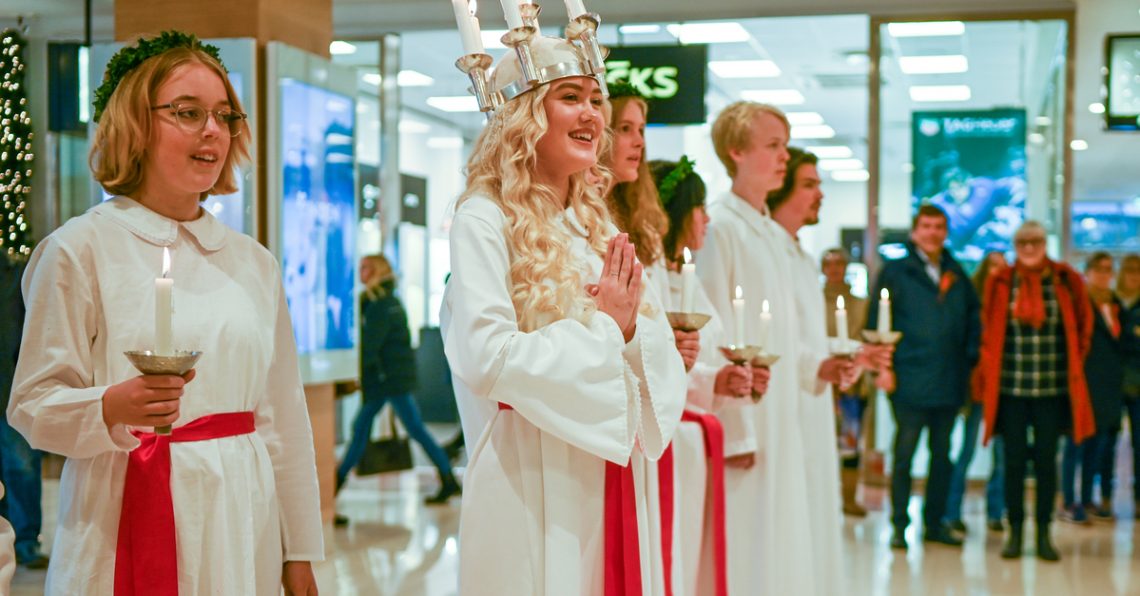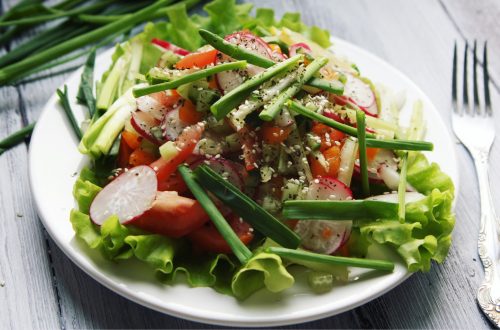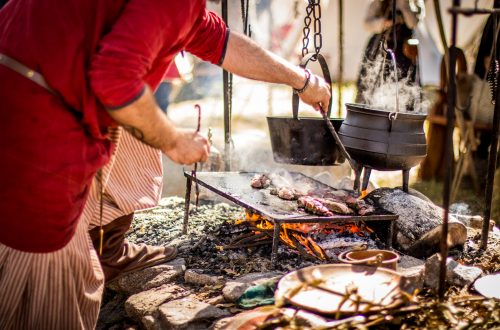
Holiday Feasts and Ideas for You from Around the World
When I think about the holidays, I think food, of course. After all, humans have been feasting during this time of year for thousands of years, when midwinter celebrations and the attendant traditional foods were prepared. It’s tempting to become fixed on the food, but I think the goal of a good feast is to create memories for those who attend. Ernest Hemingway had the right idea. His posthumous memoir of living in Paris as a young man was entitled A Moveable Feast. His widow Mary Hemingway so named the book because Ernest reportedly said, “If you are lucky enough to have lived in Paris as a young man, wherever you go for the rest of your life, it stays with you, for Paris is a moveable feast.”
It’s easy enough to create memorable holiday celebrations. Here in the U.S. and Europe, our traditions usually include singing carols, baking and cooking together, telling stories, maybe working on a project to benefit the less fortunate or the larger community. For Hanukah, the festival of lights, children play with dreidels, people light menorahs, and tables are laden with latkes and oil-rich foods symbolic of spiritual victory. Whether a small group or large, with friends and family or both, everybody has traditions – and can create new ones.
Seven fishes and lefse
For many years, Mrs. Farmboy and I have enjoyed the Feast of the Seven Fishes dinner hosted by close friends on Christmas Eve, who are inspired by their Italian heritage. I can remember from my boyhood the big Christmas dinner that my grandmother hosted: goose or turkey, ham, and potatoes and gravy, but also foods reflecting the family’s Norwegian roots that included pickled herring, lingonberries, and pickled beets.
I also remember enjoying the myriad Christmas cookies that my mother made and frosted in the weeks before Christmas. What my children remember from their grandmother was the lefse she made for them, a round Norwegian flatbread of flour and mashed potatoes covered with butter, sugar, and cinnamon. I’m thinking about taking my own lefse-making kit to my grandchildren’s house to carry on that holiday family tradition with them.
Stollen, suckling pig, and KFC
The French have Bûche de Nöel, the elaborate traditional Christmas confection made with chocolate cake rolled up, frosted, and decorated to look like a snow-covered log. The Germans have roast goose and stollen, a rich sweet bread made with marzipan, studded with candied fruit, and coated with powdered sugar. A centuries-old tradition throughout Germany, stollen takes a while to make, then ages for several weeks before you get to eat it. Puerto Ricans favor lechon – a roast suckling pig – while in Japan, people eat Kentucky Fried Chicken on Christmas Eve. I learned that it’s so popular, they have to order it two months in advance. In Asia, different countries and religions have their own distinct ways to celebrate the new year with family and honor their ancestors.
If you don’t have your own traditions, maybe you can borrow some. In Sweden, they celebrate St. Lucia, a festival of lights. The young girls in the family wear wreaths with lights or candles on their heads as they lead a procession, singing and handing out ginger cookies. Originally, the processions took place in church, but nowadays, it’s celebrated mostly in schools. Young people often take their processions into the community, visiting retirement homes and shopping malls, for example (as shown in the photo with this post).
In Iran, families gather on the longest night of the winter to celebrate the triumph of the Persian god Mithra over darkness. This festival of Shab e Yalda includes burning fires all night and reading poetry while enjoying nuts, pomegranates, and other festive foods. The Zuni American Indians celebrate the return of the sun with a dance called Shalako.
Then there’s the shark meat
It’s hard to top the Icelandic midwinter Thorrablot, where locals get together to eat, drink, be merry, and tell stories. After a dinner of rotten shark meat, boiled sheep’s head, and blood sausage washed down with a potent schnapps made from potato and caraway, the merry-makers partake in traditional songs, games, and story-telling, accompanied by dancing. As for me, I prefer lefse. But maybe I’ve inspired you to try something new this holiday season. What are you thinking about for memory-making this season?
To comment, please click on “Read in Browser” or on the headline to view the blog on the website. You can log in and comment at the end of the blog to share your thoughts and start a discussion.
If you’d like to share the blog, click on the Facebook icon or one of the others. Thanks!





2 Comments
Tom Stites
The holiday food tradition that has sprung up among my wife Alex and my children and me originated in the Little House on the Prairie Cookbook, which is a marvelous piece of work. This makes sense — I’m from Kansas City, which the great book “Nine Nation’s of North America” identified as the capital of the Breadbasket Nation. My mother was from Central Missouri and my father from the Great Flatness of southwestern Minnesota — and my kids loved the Little House books.
A couple of decades ago I took part in an early version of antiracism training where the white people were urged to get in touch with their European heritage. I couldn’t do it. My people have been on these shores for so long that there are no stories that stretch back to an “old country,” at least not an “old country” in Europe. For me, the “old country” is the Great Plains, so for the training exercise I defined my heritage as a Great Plains barbecue-eater. The barbecue part makes sense, too. Until my wife and I moved into a condo where it’s no longer possible, I smoked our Thanksgiving turkeys. I miss that!
Carol Birkland
Coming from a Norwegian and Swedish background – my father was a Norwegian immigrant and my maternal grandmother was born in Sweden – Christmas and the food around Christmas was always a big deal.
But it was not until I married into a 100% Norwegian family from Minnesota – whose ancestors immigrated in the mid-1800’s and then proceeded to marry no one other than a 100% Norwegian until I came along – that I was introduced to what I referred to as the “Blizzard Plate”.
Christmas Eve after Lutheran Church services, all of us would return to my inlaw’s house where my wonderful mother-in-law would begin boiling food. The main attraction was boiled cod supported by boiled potatoes and lots of lefsa which Lynn has mentioned above. There may have been boiled cauliflower, but I am not sure about that. They proceeded to pour melted butter over the whole plate and ate the lefsa with butter and brown sugar.
Cod can be great but it was boiled to the point of toughness. The potatoes were okay and I always ate the lefsa only with butter. Why destroy the wonderful potatoe taste of it with brown sugar?
Finally after years of this, I put my foot down and said no more. I went to IKEA in Minneapolis and bought their very tasty Swedish meatballs with the sauce packet. The Norwegians smiled and ate the meatballs, I think, only out of “Minnesota Niceness”.